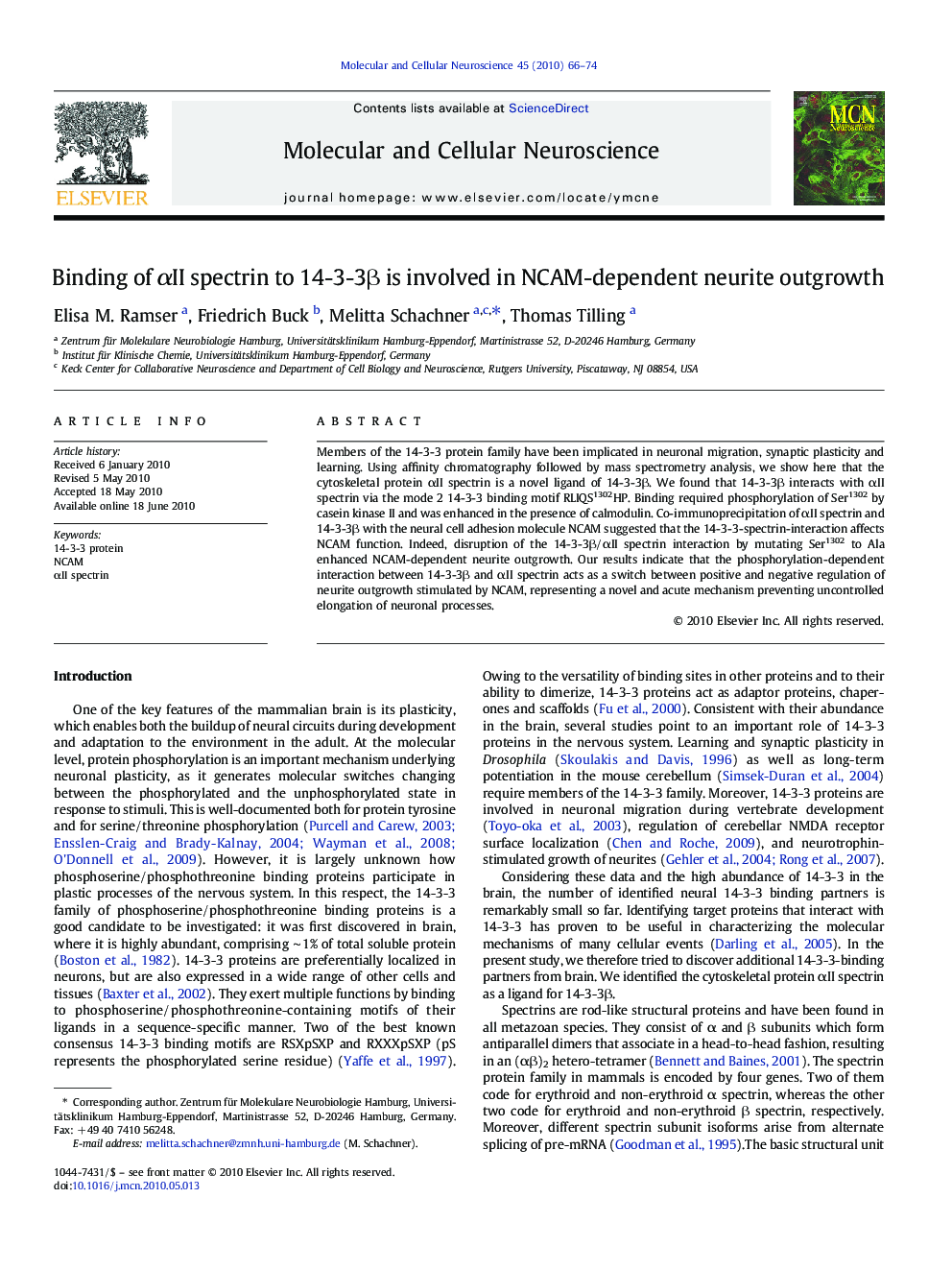| Article ID | Journal | Published Year | Pages | File Type |
|---|---|---|---|---|
| 10956695 | Molecular and Cellular Neuroscience | 2010 | 9 Pages |
Abstract
Members of the 14-3-3 protein family have been implicated in neuronal migration, synaptic plasticity and learning. Using affinity chromatography followed by mass spectrometry analysis, we show here that the cytoskeletal protein αII spectrin is a novel ligand of 14-3-3β. We found that 14-3-3β interacts with αII spectrin via the mode 2 14-3-3 binding motif RLIQS1302HP. Binding required phosphorylation of Ser1302 by casein kinase II and was enhanced in the presence of calmodulin. Co-immunoprecipitation of αII spectrin and 14-3-3β with the neural cell adhesion molecule NCAM suggested that the 14-3-3-spectrin-interaction affects NCAM function. Indeed, disruption of the 14-3-3β/αII spectrin interaction by mutating Ser1302 to Ala enhanced NCAM-dependent neurite outgrowth. Our results indicate that the phosphorylation-dependent interaction between 14-3-3β and αII spectrin acts as a switch between positive and negative regulation of neurite outgrowth stimulated by NCAM, representing a novel and acute mechanism preventing uncontrolled elongation of neuronal processes.
Keywords
Related Topics
Life Sciences
Biochemistry, Genetics and Molecular Biology
Cell Biology
Authors
Elisa M. Ramser, Friedrich Buck, Melitta Schachner, Thomas Tilling,
